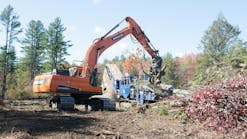When faced with a difficult choice, there’s ancient wisdom that advises us to “choose the lesser of two evils.” What if you’re having trouble deciding which choice is less evil than the other?
While we’re having a difficult time trying how to fund the repair and/or replacement of our infrastructure, there’s never really been a question of whether or not to it. We’ve never been faced with having to sacrifice one necessity for another necessity.
Peru is in the middle of trying to make that kind of decision. Should it build an international airport in order to increase tourism? Or should it preserve that land and the archeological history it holds?
According to Science Magazine, construction crews started clearing land in Chinchero, Peru, for the new airport. If things go as planned, the airport will be finished in 2023 and offer better access to the famous historical site, Machu Picchu.
Science Magazine reports:
“Since the 1970s, the regional government has dreamed of replacing the current Cuzco airport, which can handle only short-hop flights, with an international hub that could receive jets from Miami, Florida, and other distant cities. That would greatly ease a foreign tourist’s trip to Machu Picchu, which now involves at least two flights and can take several days. [President] Vizcarra, who visited the construction site this week, has called the airport ‘a necessity for Cuzco and for Peru.’ Officials have promised it will bring increased economic opportunities, and at least some area residents are eager for the potential boom. One of Chinchero’s three Indigenous communities sold its land to the government for the project.”
That makes plenty of sense; take advantage of incoming tourism money to improve the local communities by making it easier for tourists to travel to Chinchero. The problem is that nearly the entire area is of some archeological value. Researchers are still finding ancient sites using new technologies.
The Science Magazine article continues:
“Topa Inca, who ruled from 1471 to 1493, built a royal estate at Chinchero, similar to Machu Picchu (built by his father, Pachacuti), and others nearby including Ollantaytambo and Písac. Unlike those, Chinchero has remained largely untouched. Its preservation is ‘phenomenal,’ says Stella Nair, an architectural historian at the University of California, Los Angeles, who spent a year in Chinchero measuring and mapping the Incan imperial buildings and landscaping that still dot the town and the farmland around it. ‘The key for studying the architecture is finding sites that haven’t been altered for tourist consumption. And that is incredibly hard,’ she says.”
Building an international airport would make it impossible. So how do you decide whether or not to move forward with infrastructure? Which is the lesser of two evils? Ruining ancient grounds for tourism dollars? Or leaving in place a struggling local economy and difficult journey for tourists?
What would you do? But before you answer, take a look at this short video from National Geographic titled, “Mach Picchu 101.”



